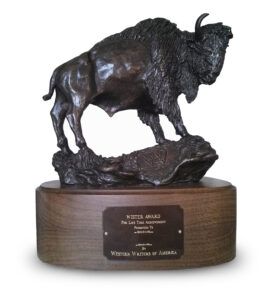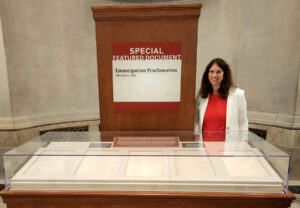1862 Maryland headquarters in dire straits
An 1820s house near Burkittsville, Md., that offered shelter to Union troops during the war now sits exposed to the elements and in danger of collapse.
The yellow brick, Federal-style house has been in continuous ownership by the Shaffer-Motherway family ever since its construction. During the war, Union Maj. Gen. William B. Franklin used the property as his headquarters during the Battle of Cramp ton’s Gap on September 14, 1862. Franklin’s VI Corps of the Army of the Potomac broke the Con federate line at the gap, but the general did not follow up on his victory. The fight near Burkittsville, and battles to the north the same day at Fox’s and Turner’s gaps, were precursors to the bloodletting that would occur at nearby Sharpsburg just three days later.
The house now stands vacant and neglected, and has been so ever since its last occupant, Mary Motherway, died in 2003 at the age of 103. Local preservationists are concerned that time may be running out to preserve the structure.
The foundation and walls sag in places, windows are broken, the roof has gaping holes and historic outbuildings are filled with junk. There is also ample evidence of vandalism, squatting and drug use in the historic house.
“Frederick County is becoming urbanized, and old houses like this are disappearing,” says Dan Fout, a Burkittsville resident who is working with the South Mountain Heritage Society to collect donations and advocate for the house’s preservation. “If I had my wish, I’d have the state of Maryland buy it and use it as an interpretive center for the Battles of South Mountain and Crampton’s Gap. It’s a grand old house.”
Although the home needs work, its structure and historic materials remain sound, Fout says. Handmade mantels adorn several rooms, and vintage details such as fluted half-columns and a transom front-door window can still be seen.
Motherway bequeathed the house to a grand-nephew, Shannon Shaffer, who lives in Virginia and apparently has not visited the property for some time. Calls to Shaffer had not been returned as of press time, but Fout says that Shaffer has permitted him to monitor the house and stabilize it if necessary. He now hopes to engage Shaffer and the Frederick County Landmarks Foun – dation to develop a restoration and reuse plan for the property.
“It possesses a high degree of integrity from the early 19th century,” says Doug Claytor, a Landmarks board member. “One of my goals is to establish a place of learning there for young people, to study not only the battles but also historical architecture and the building trades. Whether that can come to fruition, we can only hope.”
—Kim A. O’Connell
New York State Military Museum conserves its cache of colors
On July 4, 1865, a distinguished group of Union veterans convened in Albany, N.Y., for an Independence Day celebration like no other. With the war finally behind them, Union generals such as Ulysses S. Grant, Daniel Butterfield and Daniel Sickles assembled to donate several battle flags to the state for safekeeping, continuing a tradition that had begun two years earlier. “These standards,” Butterfield said, “are returned, battle-scarred, hallowed by the blood of your patriot sons.”
Today those historic flags and others are the focus of a large-scale conservation effort. Now housed in the New York State Military Museum in Saratoga Springs, the collection has grown to nearly 1,900 flags, including about 850 that date to the Civil War. Remarkable examples include the 11th New York Infantry regimental colors, which includes images of firefighting equipment and red, white and blue fringe; the 5th New York Regiment’s national colors, whose field of stars is arranged in a star pattern; and the 10th New York national colors, on which the names of lost comrades have been inscribed.
Yet for decades the collection was inadequately stored—with flags furled on their stands and crammed together in oak cases inside the state capitol. The collection now suffers from a range of problems, says Christopher Morton, an assistant curator with the museum who is head curator of the flag conservation project. Most are in fair to poor condition, after being exposed to damage by dirt, excessive light and gravity due to the way they were furled.
Since 2000, however, the military museum, in partnership with the New York State Office of Parks, Recreation and Historic Preservation, has conserved more than 450 flags. “To start the project, we inventoried the flags and pigeonholed them into size categories so we knew what we had and how much storage would be required,” Morton says. “We store them flat now as opposed to furling them on their stands. We conserved them based on greatest conservation needs, which usually meant dealing with the oldest flags first.”
Although treatment varies from flag to flag, methods typically include “conservation vacuuming” to remove dirt, careful cleaning, a nondestructive stitching technique and adhesives to hold fragile pieces together. The 11th New York regimental flag, for example, said Morgan, was challenging because many small silk bits had separated from the main body of the flag.
As the conservation project progresses, the museum also has exhibited portions of its collection. At the state capitol, “Flags from the Heart & Home,” an exhibit that continues through October, showcases 10 conserved battle flags that New Yorkers presented to local volunteer regiments during the Civil War, signifying each community’s support for its soldiers.
“The soldiers themselves would want to see their flags taken care of,” Morton says, “so we all feel as if we’re finally doing what they would want us to do. We’re motivated to protect the investment they made with their life’s blood.”
Gettysburg’s 145th Anniversary
If you can’t wait for all the hoopla that will attend the sesquicentennial commemoration of the Civil War, the 145th anniversary reenactment of the battle of Gettysburg should tide you over. Held July 4-6 near the historic battlefield, the mammoth event will include not only the expected battle re-creations, but also numerous lectures, demonstrations of live mortar fire, drum-and bugle-playing and period fashions, as well as plenty of souvenirs, collectibles and summertime chow. More than 100 cannons and 400 mounted cavalry are expected. More information at www. gettysburgreenact ment.com.
—Kim A. O’Connell
Originally published in the July 2008 issue of America’s Civil War. To subscribe, click here.




